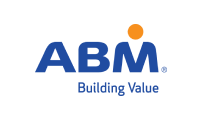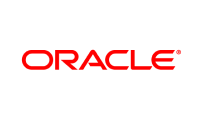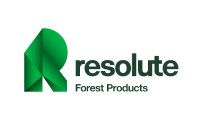Le Conseil international des normes de durabilité (ISSB) a été lancée par la Fondation IFRS afin de créer une base de référence mondiale pour les informations financièrement significatives en matière de développement durable.
En juin 2023, l'ISSB a publié ses premières normes :
- IFRS S1 - Exigences générales pour la publication d'informations financières relatives au développement durable
- IFRS S2 - Informations à fournir sur le climat
Ces deux normes entrent en vigueur pour les périodes de déclaration commençant le 1er janvier 2024. Ces normes visent à convertir les risques et opportunités environnementaux, sociaux et de gouvernance (ESG) en informations utiles à la prise de décision des investisseurs.
L'importance de l'ISSB pour le reporting ESG mondial :
L'adoption s'accélère. D'ici mai 2024, plus de 20 juridictions, dont l'UE, le Royaume-Uni et l'Australie, représentant près de 55% du PIB mondial et plus de 40 % de la capitalisation boursière, ont annoncé leur intention d'introduire des Règles alignées sur l'ISSB. Le Canada, le Japon et Singapour sont en train d'élaborer une législation, tandis que les États-Unis suivent de près l'évolution de la situation par l'intermédiaire de l'Organisation mondiale de la santé (OMS). Les propositions de la SEC en matière de divulgation d'informations sur le climat .
"Alors que nous nous lançons dans notre plan de travail de deux ans pour développer la base de référence mondiale, je suis reconnaissant à nos partenaires d'avoir créé un système de divulgation efficace et efficient pour les marchés de capitaux".
–Emmanuel Faber, président de l'ISSB
Les investisseurs se félicitent de cette cohérence. Une enquête Reuters menée auprès de grands gestionnaires d'actifs a révélé que 78% prévoient de soutenir les entreprises qui suivent les normes ISSB. En outre, les autorités de régulation des marchés financiers, sous l'égide de l'OICV, ont approuvé les normes, ce qui accroît la probabilité d'une adoption obligatoire. En outre, l'ISSB s'aligne sur la TCFD, ce qui garantit la continuité pour les entreprises qui divulguent déjà des informations sur le risque climatique. Par ailleurs, l'ISSB collabore avec des organismes tels que la GRI afin de réduire les doublons.
Comment mettre en œuvre l'ISSB dans votre entreprise :
- Évaluer la matérialité financière : Cartographier les questions ESG susceptibles d'influencer les flux de trésorerie, le coût du capital ou la valeur de l'entreprise.
- Repère les rapports actuels : Comparez vos informations GRI, SASB ou CDP aux exigences des normes IFRS S1/S2 pour repérer les lacunes.
- Mettre à niveau les systèmes de données : Construire des pipelines de données vérifiables et prospectives pour les mesures, les objectifs et l'analyse de scénarios.
- Embarquer la gouvernance : Donner au conseil d'administration un droit de regard formel sur les risques liés au développement durable, les intégrer à la gestion des risques et à la stratégie.
- Renforcer les équipes: Inscrire le personnel chargé des finances et du développement durable à des cours ciblés tels que le Programme des praticiens certifiés en matière de développement durable (ESG) pour maîtriser les exigences de l'ISSB.
ISSB vs GRI et SASB : Principales différences
Lorsqu'il s'agit de naviguer dans les cadres de reporting ESG, il est important de savoir que l'on ne peut pas se contenter d'un seul rapport. cruciale pour comprendre comment ISSB, GRIet SASB diffèrent en termes d'objectif, de public, de champ d'application et de réglementation.
L'ISSB est conçu principalement pour les investisseurs et les marchés de capitaux. Elle se concentre sur la matérialité financière, ce qui signifie qu'elle met l'accent sur les facteurs de durabilité qui pourraient avoir un impact sur la valeur de l'entreprise. En revanche, la GRI (Global Reporting Initiative) est axée sur les parties prenantes et aborde un éventail plus large de préoccupations, y compris les impacts environnementaux et sociaux, sans tenir compte de leurs implications financières. La GRI utilise un Double approche de la matérialitéqui combine à la fois des perspectives financières et sociétales.
SASB (Sustainability Accounting Standards Board), aujourd'hui fusionné avec l'ISSB, a toujours servi les investisseurs en mettant l'accent sur les risques ESG spécifiques à l'industrie. Ses 77 normes sectorielles sont désormais intégrées dans les orientations sectorielles de l'ISSB, ce qui confère une profondeur pratique à la base de référence mondiale de l'ISSB.
Voici un aperçu de leur comparaison :
- Objectif et public :
ISSB : Investisseurs, régulateurs, marchés financiers
GRI : Parties prenantes au sens large (société civile, employés, ONG)
SASB : Investisseurs (rapports sur les risques spécifiques au secteur)
- Matérialité :
ISSB et SASB : Matérialité financière
GRI : Double matérialité (impact financier + sociétal)
- Champ d'application et structure :
ISSB : Cadre de haut niveau avec les normes sur le climat et le développement durable (IFRS S1 et S2)
GRI : Informations ESG complètesLes droits de l'homme, y compris la biodiversité, les droits de l'homme et les chaînes d'approvisionnement
SASB: Mesures détaillées dans 77 secteurs d'activité (fait maintenant partie de l'ISSB)
- Statut réglementaire :
ISSB : approuvée par l'OICV, elle gagne du terrain sur le plan réglementaire à l'échelle mondiale
GRI : largement utilisée, surtout en Europe
SASB : intégré à l'ISSB ; n'est plus un cadre autonome
Alors que l'ISSB fournit une base de référence mondiale axée sur les investisseurs financiers, la GRI offre une vision plus large de l'impact ESG, et la SASB apporte des détails spécifiques à l'industrie qui sont maintenant intégrés dans la structure de l'ISSB. Les entreprises peuvent tirer profit de l'utilisation conjointe de l'ISSB et de la GRI, en abordant les points suivants à la fois les marchés financiers et les attentes des parties prenantes au sens large.
FAQ
Qu'est-ce que le cadre de l'ISSB ?
Il se compose de IFRS S1 et IFRS S2La Commission européenne a mis en place un système d'information sur le climat et le développement durable, qui fournit aux investisseurs des informations comparables sur le climat et le développement durable.
Comment passer aux rapports de l'ISSB ?
Commencez par une analyse des lacunes, renforcez la qualité des données, intégrez l'ESG dans la gouvernance et utilisez des projets pilotes pour tester les informations.
Les normes de l'ISSB sont-elles obligatoires ?
De plus en plus de juridictions les rendent obligatoires ou les obligent à se conformer ou à s'expliquer. En les adoptant rapidement, vous devancez les régulateurs et les investisseurs.
Prêt à diriger avec confiance ?
Participez à nos prochaines formations
Le paysage du développement durable évoluant rapidement, rester en tête signifie être proactif en matière de leadership. Que vous vous prépariez à vous aligner sur l ISSB, améliorer GSE ou intégrer le développement durable dans votre stratégie de base, nos prochains programmes pour les praticiens certifiés en matière de durabilité (ESG) offrent les outils, les cadres et les conseils d'experts dont vous avez besoin.
Rejoignez les cadres et les professionnels du développement durable du monde entier dans le cadre de nos formations hautement acclamées, dirigées par des praticiens, disponibles en ligne et en personne dans les principales villes du monde.
Découvrez les prochaines dates de formation et inscrivez-vous ici. Réservez votre place et acquérez les connaissances nécessaires pour mettre en place des systèmes d'information résilients, transparents et prêts pour les investisseurs. GSE les divulgations.







